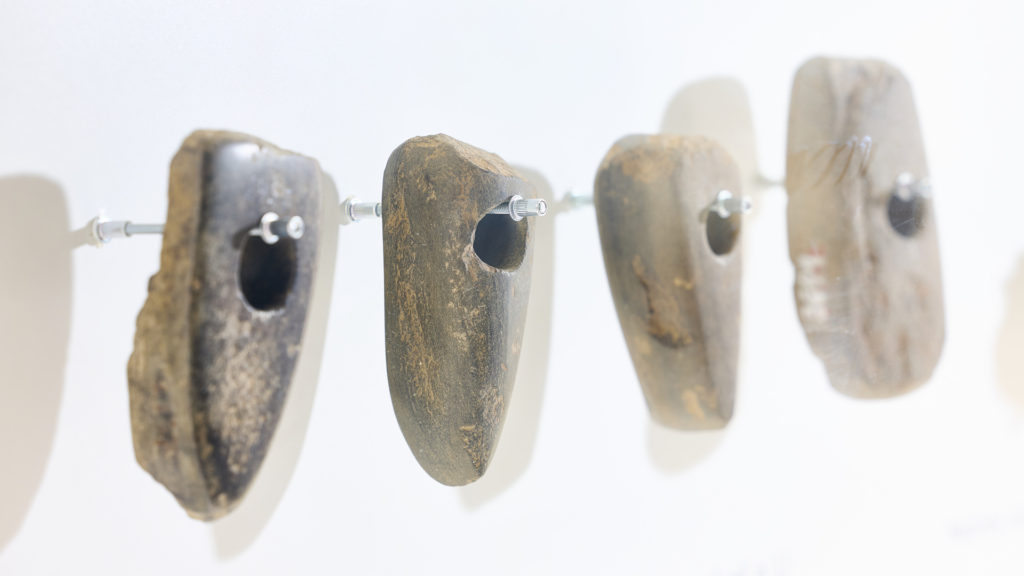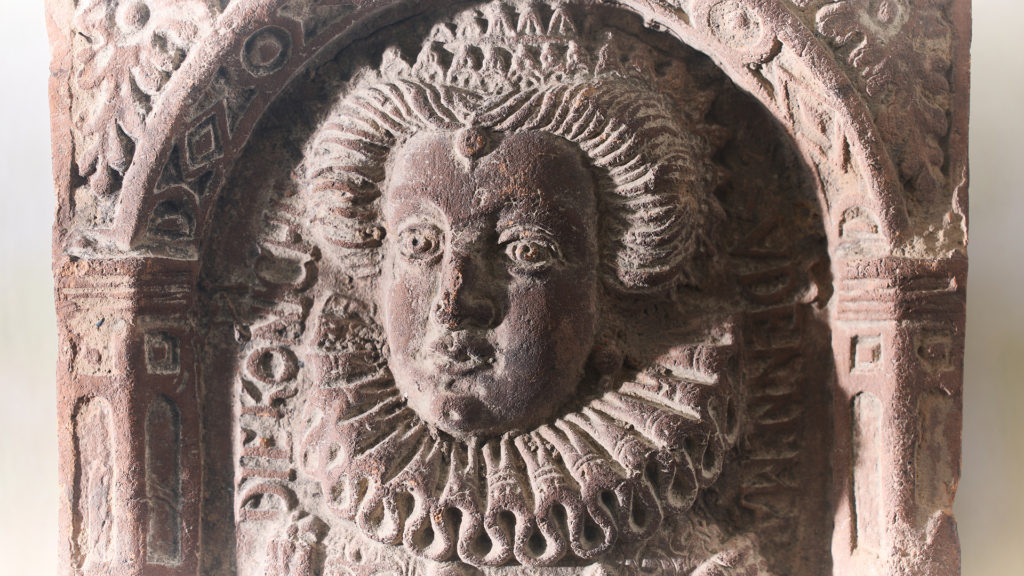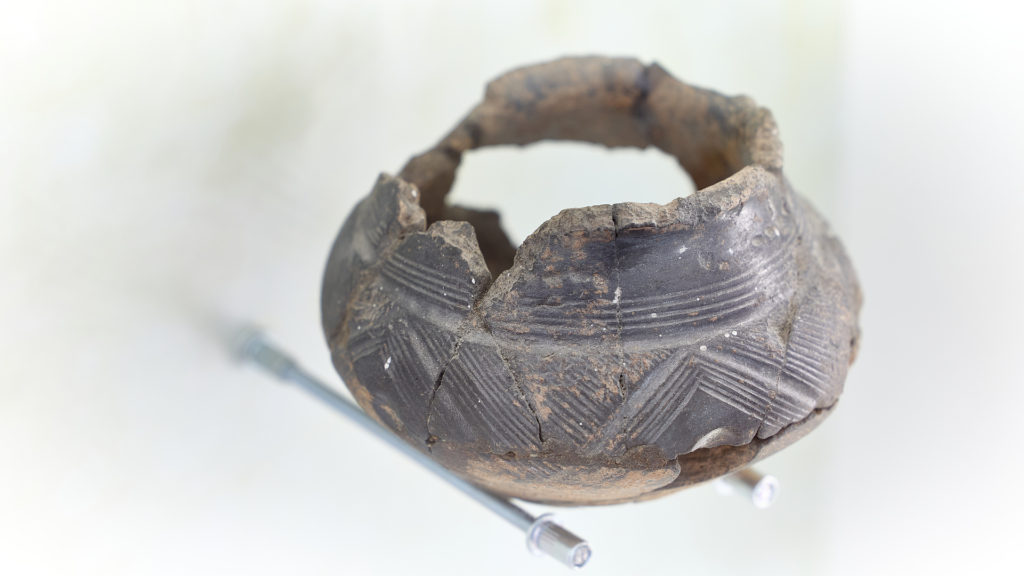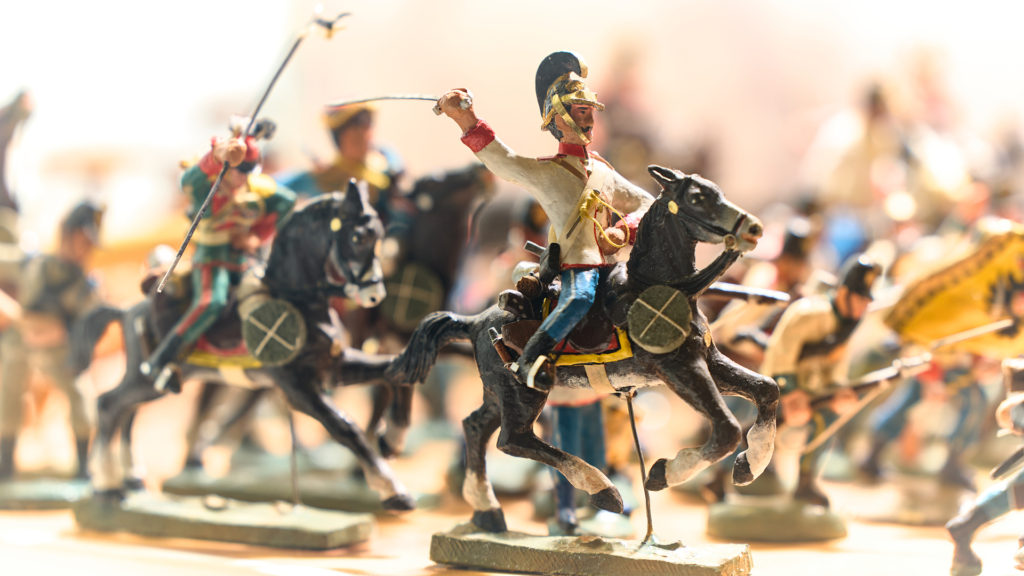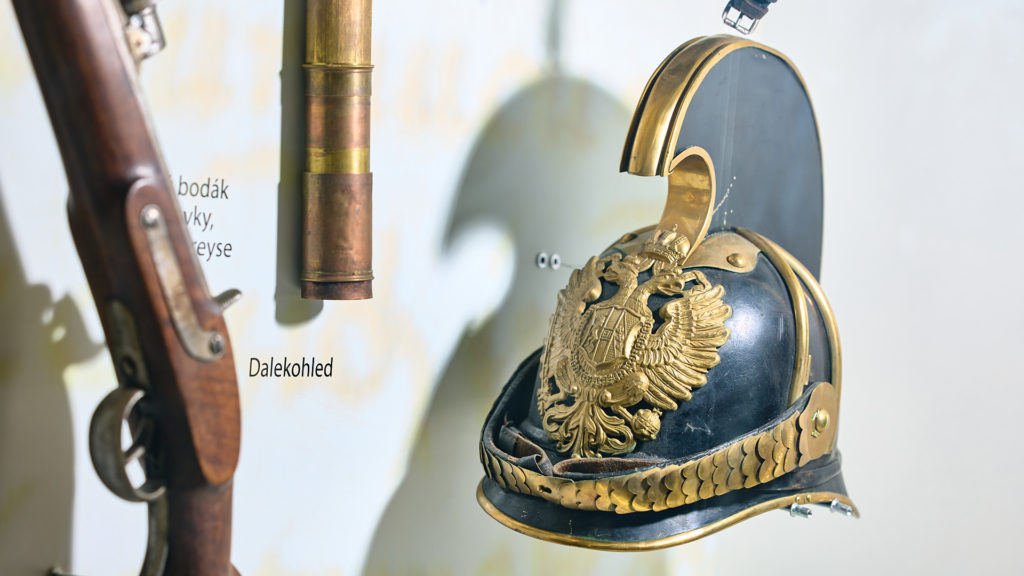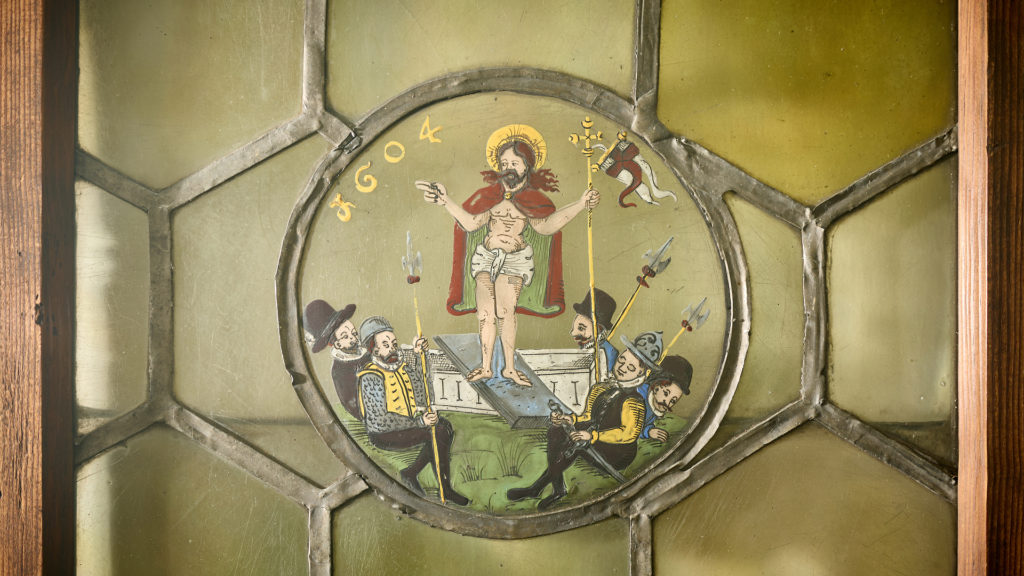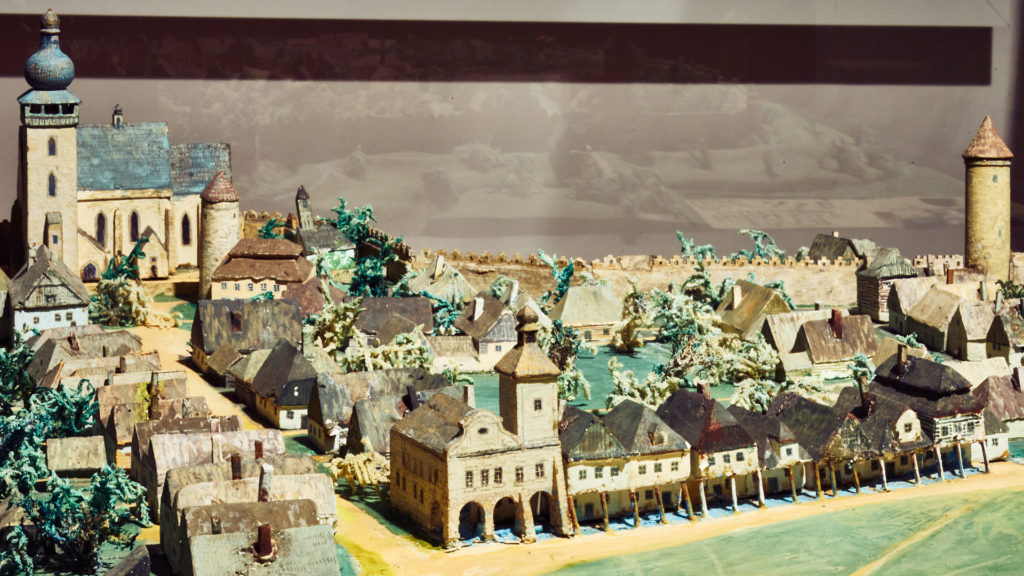History of the Town of Dvůr Králové nad Labem and History of the Textile Industry in Dvůr Králové Region
Welcome to the Municipal Museum in Dvůr Králové nad Labem. The museum is located in Baroque grounds called Kohoutův dvůr (Cock´s Court). The whole site was originally a yeoman´s courtyard built in 1738 by the concierge F. A. Bergl for the needs of F. A. Špork´s estate in Kuks.The complex consists of three buildings: the main building serves as an exhibition hall for two permanent exhibitions. The exhibition devoted to the production of traditional Christmas decorations can be found on the second floor and the newly opened History of the Town of Dvůr Králové nad Labem and History of the Textile Industry in Dvůr Králové Region is to be found on the first floor, the place where you are just now. In the building that was the original granary there is an exhibition hall and an art gallery. The buildings are interconnected by a sandstone gate with three Baroque statues produced by Matyas Bernard Braun´s followers.
Short history of the Town of Dvůr Králové nad Labem The area of Dvůr Králové nad Labem was already inhabited by the 12th century. The beginnigs of the town can be dated to around the year 1200 when there used to be a residence with a Romanesque chapel. This fact can be confirmed by the name of the place, Dvůr (Curia), and also by archeological relics of a Romanesque apse (1911).
The original residence and a nearby settlement started to grow. Unfortunately, it is not known exactly when the then settlement was declared a town but this was supposed to have happened during the reign of Přemysl Otakar II (1253–1278).
Our town has been known as a textile town for a very long time. In the 16th century, local textile tradesmen started to form guilds (linen weavers, cloth makers, dyers). Beginning at the end of the 17th century small-scale skilled handiwork was being replaced by manufactured production.
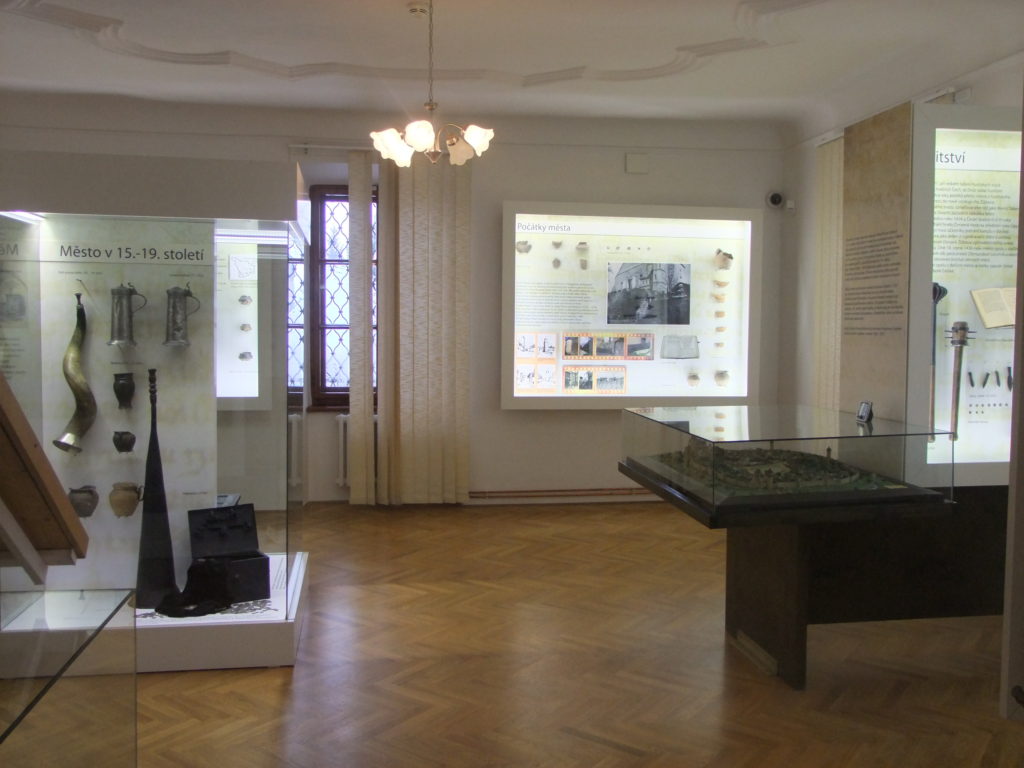
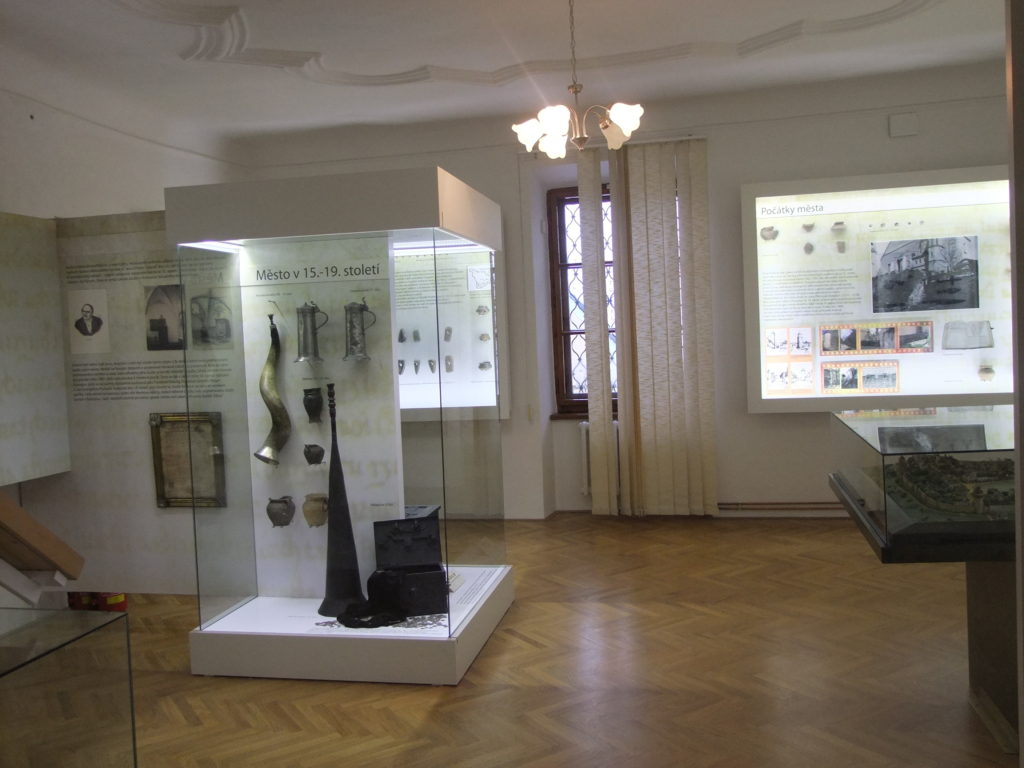
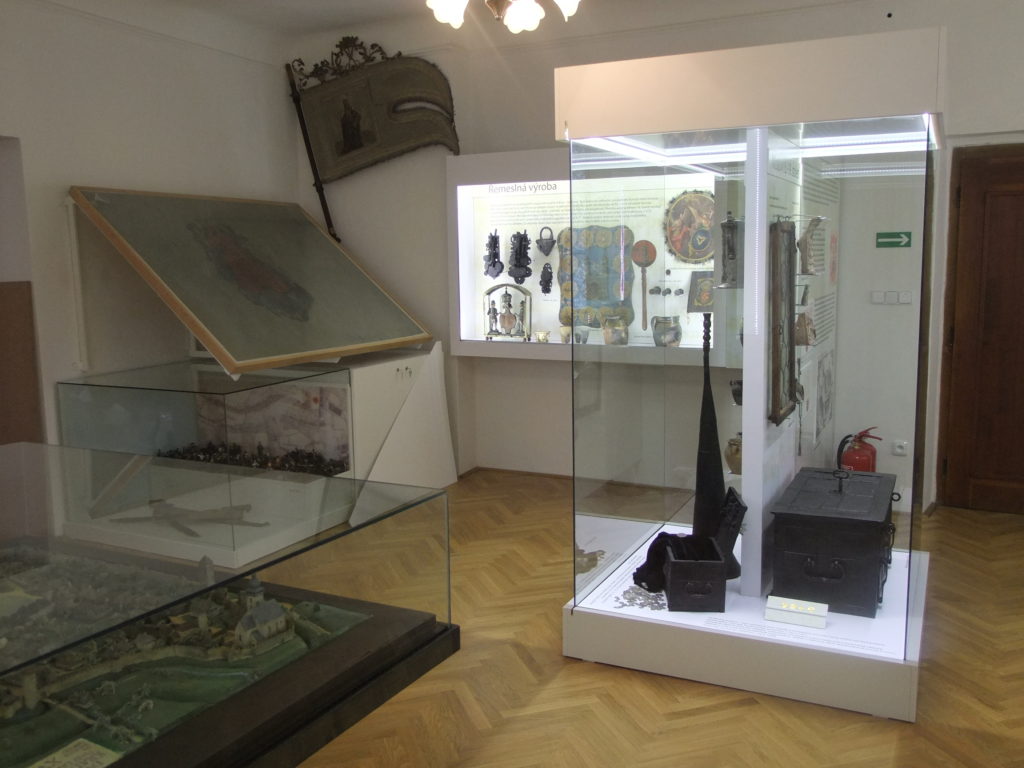
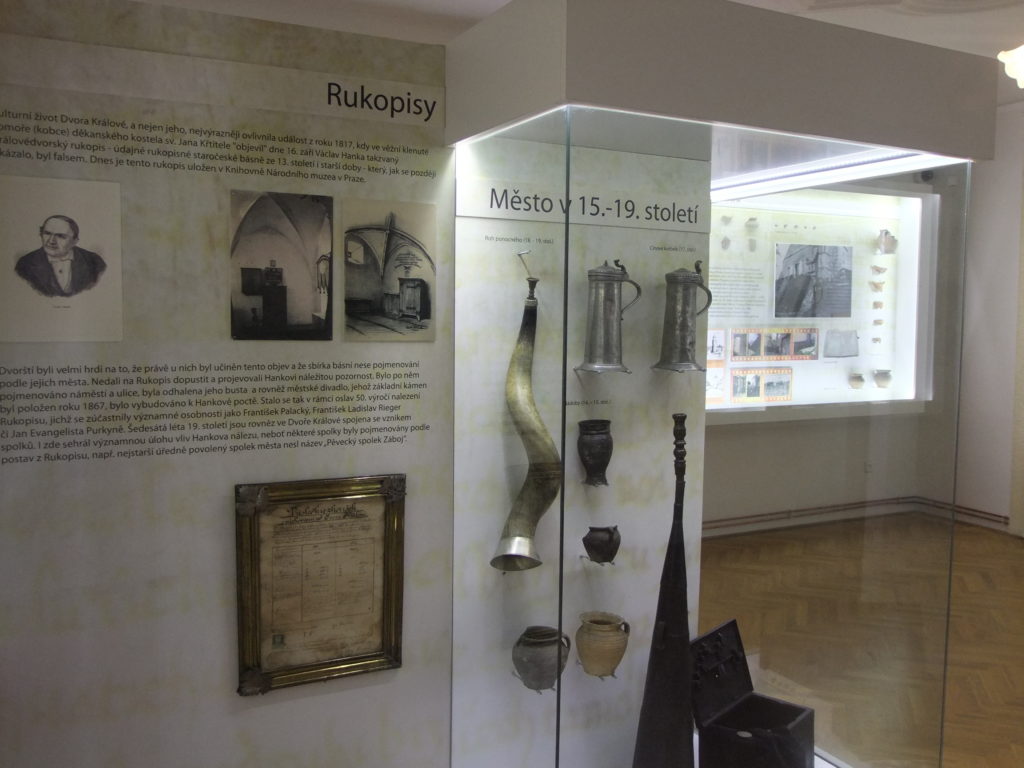
The system of factorship can be considered the initial stage of manufacturing production. Factors gave work to linen weavers and cloth makers, then they bought their products and sold them at a profit, usually to wholesale firms. The first evidence of workshops in Dvůr Králové nad Labem comes from the end of the 18th century. There were two workshops at that time. The owner of a cotton spinning mill on the northern outskirts of the town (Podharť) was J.Schubert (1790) and a dye-works, printing works and drying chamber were built on the southern outskirts in 1791 by František Thim, a linen dealer.
The World War I influenced the development of industrial production. The town had to deal with mobilization, arrests, recruitment of young men, gradual price increases, lack of money and a coal crisis. A new municipal office – a supply office – was established just at the beginning of the war. This office managed the town’s food supply because Dvůr Králové, being an industrial town, did not have enough food and it was mainly because of this action by the town council that Dvůr Králové was better supplied than other towns. The town’s inhabitants joined the fight for the creation of an independent state. On 13th April 1918, the town clerk took part in a demonstration by the representatives of the Czech nation in Prague, where the oath of Czechoslovak nationhood was approved. On 28th October people met in the town square, and both national and Panslavic flags were hung on buildings. There were fireworks in the evening to celebrate the day and the celebration also continued into the following day. In the 1920s and 30s, Czechoslovakia belonged to a region of ten highly-developed countries. Of course, there were differences between separate areas of the state which could be seen at the time of the world economic crisis in 1929. The only firm which was not forced to close down its production at all (there were only minor reductions 2 of production) and where they worked in two, three or even four shifts was the firm of Sochor. Economic tension contributed to a heightening of ethnic problems, especially in Sudetenland and Slovakia. The inhabitants of the court district of Dvůr Králové nad Labem experienced acutely the crisis of 1938 and 1939. (According to the 1930 population census there were 23,514 inhabitants of Czech origin and 12,543 inhabitants of German origin at that time). On 6th October 1938, Czechoslovak state radio described the line of occupation by the Germans. But this line was not the final one. The final border had to be defined by the international delimitation commission later. Dvůr Králové district was heavily struck by German occupation. It lost 32 villages out of 47. The railway station and the area as far as Kuks were occupied. At the beginning of November 1938 negotiations concerning the final determination of the border started. Mr Jaroslav Bilina, the town clerk, together with the owners of local factories as the representatives of our town went to Berlin to carry on the negotiations. Another threat to the border line appeared in December 1938. Some citizens of German nationality asked for the part of Dvůr Králové nad Labem called Podharť to be connected to Germany. The negotiations concerning the final border landscaping continued into January and February 1939. But all these negotiations were interrupted by the events of 15th March 1939 when Bohemia and Moravia were occupied by the German army. The town’s inhabitants could see German soldiers in the town square. All the representatives of the local authority were gradually exchanged and the election of Antonin Frieda to the post of town clerk was approved on 15th January 1940. In May 1941 the local authority was dissolved and a government commissar who governed the town till the end of the war was appointed. The first appointed commissar was a Sudeten German, Dr. Max Görner. He was replaced by another Sudeten German, Dr. Dobisch in 1944. Life in the protectorate was lived in fear of Totaleinsatz (forced labour in Nazi Germany), the Gestapo, prison, concentration camps, executions and persecution of Jews. 113 people of Jewish origin from Dvůr Králové nad Labem died, 11 of them in Terezín, the others in Auschwitz concentration camp. Only 5 Jewish people from Dvůr Králové nad Labem returned home from other concentration camps. The situation became even worse after 27th May 1942, when the Protector of the German Reich Reinhard Heydrich was assassinated. In spite of the terror there were brave people who fought against the invadors in this territory of the protectorate. On 5th June 1942 the former town clerk Jaroslav Bilina was sentenced to death and executed. His death was a part of the Nazi reprisals for Heydrich´s assassination.
It was evident at the beginning of 1945 that World War II was drawing to an end. There were preparations for an armed uprising in Dvůr Králové at the end of April 1945. An army was put together. The whole town was divided into three sections and commanding officers of these sections were appointed. But just before 5th May 1945 this army organization was ready only in rough outline. There had not been enough time for solving some tasks. On 5th May at midday the Prague radiostation started broadcasting desperate calls for help. Soon after this the church bells in our town started to chime which was an agreed signal for alarm. Immediately after that a siren could be heard. But it was not a signal for alarm. It was probably a signal for German inhabitants. People hurried out into the streets to see some German people were leaving the town under the protection of the SS. One of them was also the German district commissioner Dr. Dobisch. Others left the town in a German train which was waiting at the railway station; some German families gathered in the fortified Junkers factory. Germans destroyed different equipment stored in the Lövenbach factory (a radio station, radio sets etc). Czech citizens stayed in their homes nervously monitoring the fight for Prague. In the morning of 8th May 1945, the Czech citizens started to put out Czechoslovak flags after hearing the news about the total German surrender, regardless of the fact that the SS still ruled the town. But the Germans did not shoot and their commander was willing to enter into negotiations. The administration of the town was handed over to the national committee (some of the members had just returned from captivity in Lázně Velichovky). On 10th May 1945 in the early morning, our town was finally liberated. All the church bells and sirens announced that the advance guard of the Red Army had arrived in the town. The town square immediately filled with Soviet soldiers, their cars, tanks and guns and also with our citizens. They were happy that the war was over. That is why they welcomed the liberators with refreshments, flowers and tears of emotion. There were no fights between the German Army and the Red Army because the Germans had managed to escape before the arrival of the Red Army. The 3 Russian Army under the command of Brigadier Jastrebov remained in the town for a month and on 6th June there was a big army parade at the place called „Hrubá luka“ in which the Czech soldiers also took part. 12,000 people watched the parade.
History of the textile industry with cloth printing in Dvůr Králové region.
Our town has been connected with the textile industry for a long time. The first textile factories in Dvůr Králové nad Labem were built in the second half of the 19th century, but the greatest boom in textile manufacture came in the first third of the 20th century. At that time there were about 30 textile factories and the town was often called the „Czech Manchester“. People were already decorating textiles with different motifs a very long time ago. Printing in the textile industry has developed over the centuries, the beginnings of textile printing manufacture in Bohemia dates back to the period around the year 1760. Development of printing in Dvůr Králové started in the 19th century and continued into the 20th century. Manufacturers, as for example Neumann, Breuer, Sochor, Deutsch and many others, belonged to the leading producers of printed textiles and after 1945 their factories became the basis of the company Tiba, whose main undertaking was cloth printing. Probably the oldest method of printing textiles is hand printing when special printing blocks are used. Cloth is printed with the help of carved wooden blocks the surface of which is covered with a colour and then the block with a pattern is transferred onto the cloth. When the pattern has several colours, several blocks have to be used.
Blue printing belongs to traditional ways of printing. It came to Bohemia from Germany at the beginning of the 19th century. But the cradle of blue printing is in south and south-east Asia. This technology used wooden printing blocks with a carved raised pattern. Later blue printing technology was mechanized and machines called perrotines were used. But most of the blue printing in the 19th century was produced in printing factories which were equipped with printing rollers. Cloth decorated with the help of blue printing is produced in such a way that 6 different parts of the cloth are covered with a special mixture which prevents colouring of the whole surface of the cloth. In other words, there, where this mixture is applied, the colour does not penetrate and the cloth is not dyed. One of the most significant inventions in the field of printing is drum gravure printing. In this case the pattern was carved into a copper drum. Nearly every larger factory had its special roller engraving workshop, in the 1950s factories in Dvůr Králové had one central engraving workshop. Roll engravers were specialists who significantly influenced the quality of printed patterns. Later drum gravure printing was replaced by rotary screen printing. Thinness is very important in rotary screen printing but at the same time this technology enables the printing of fine shades of colours. At present, digital printing is used for cloth printing. Machines work on the principle of ink printers.
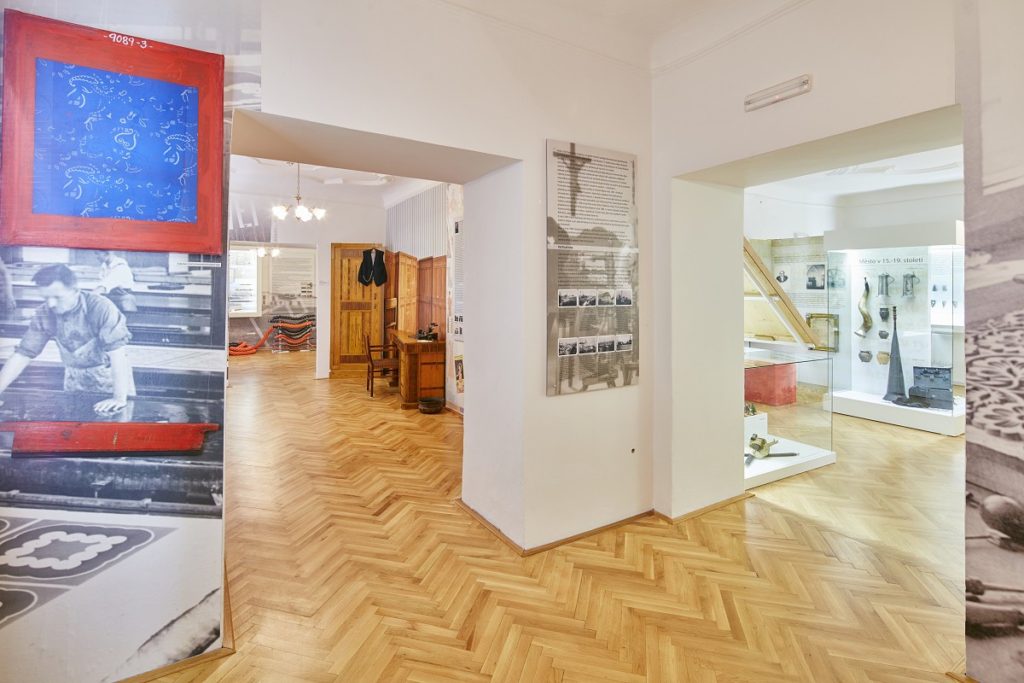
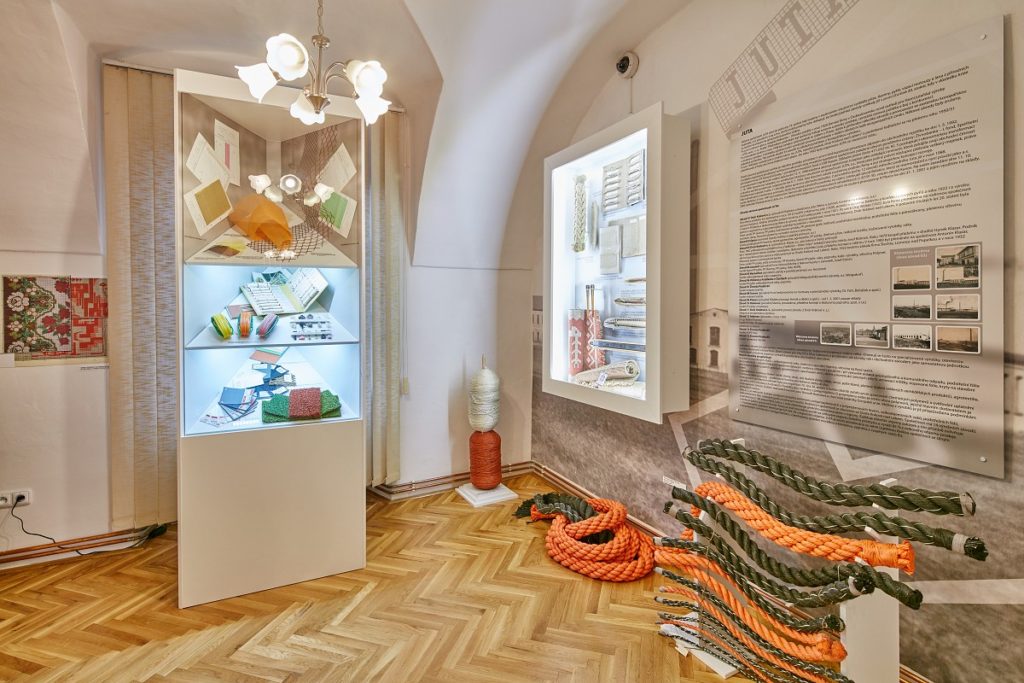
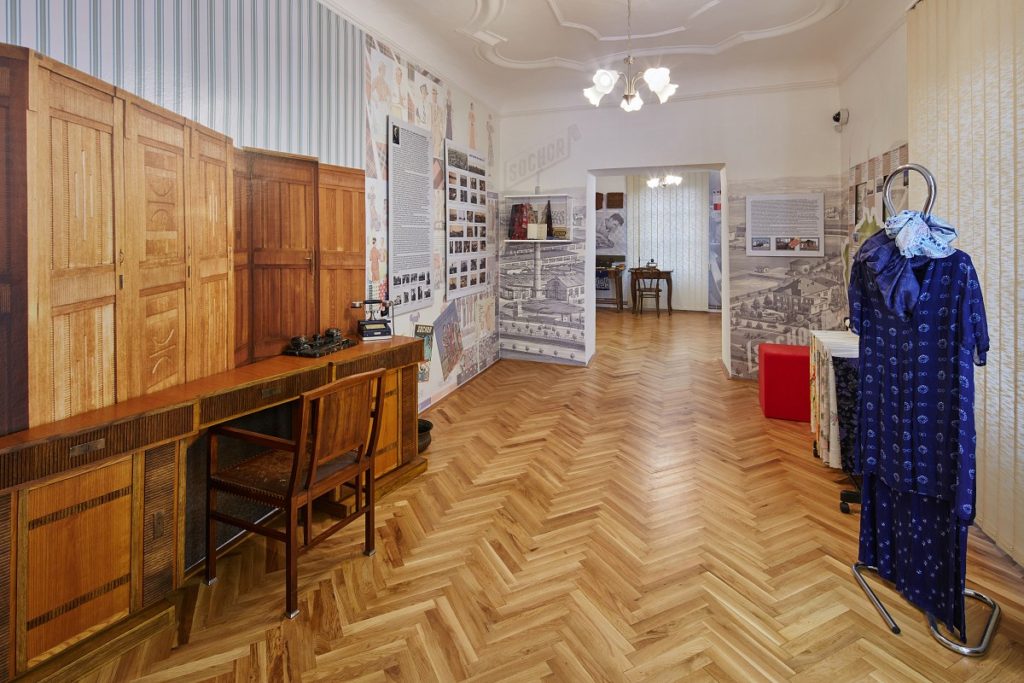
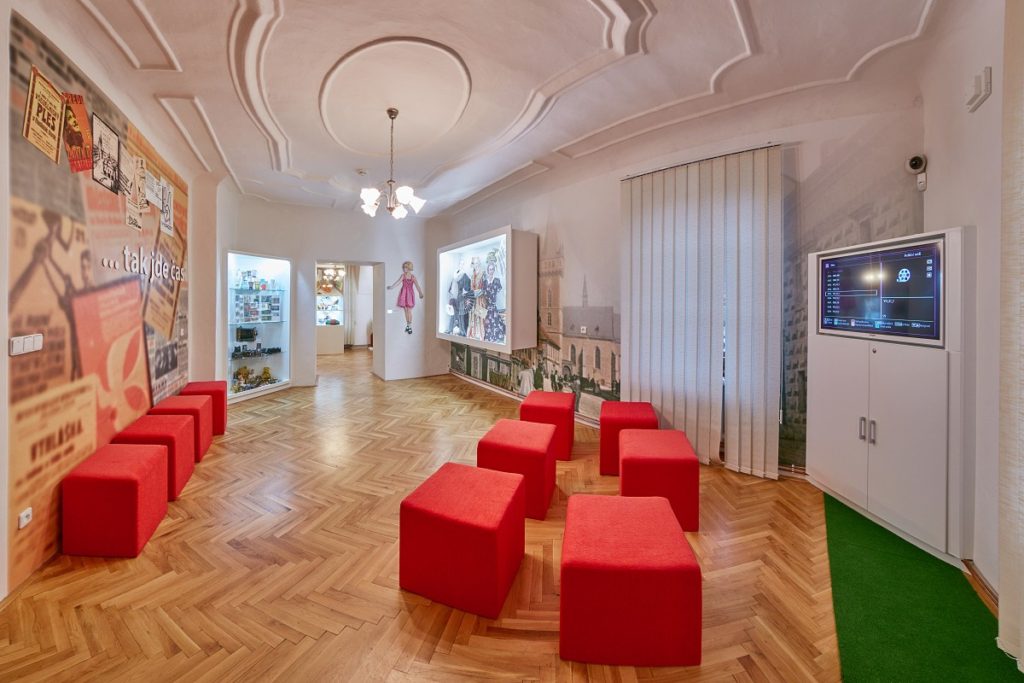
Josef Sochor
Josef Sochor (1866–1931) was one of the most important enterpeneurs in Dvůr Králové nad Labem. He was born in Žlunice in Nový Bydžov region. After 20 years when he had successfully worked in several Moravian and Bohemian textile factories, he came to Dvůr Králové and in February 1904 asked for planning permission so that he could build a mechanical weaving mill here. He built the mill in a place called Gregorka in the part of town called Zálabí where the brook Netřeba joins the river Labe. In the year 1910 he put a mechanical printing plant into operation. Rapid development of the firm was interrupted by World War I. After the war the firm continued to develop, and new buildings, for example a mill, a sawmill, an engraving plant, a laboratory and a brickworks were opened. The company continued to expand even during the world economical crisis. On 1st January 1931 the company was transformed into an unlimited liability company and Sochor´s three oldest sons Zdeněk, Josef Stanislav and Robert became its partners. After the father´s death on 7th June 1931, Zdeněk (1898–1988) and Josef Stanislav (1900–1942) became the managers of the company. They were joined by their brothers Pavel (1913– 1942) and Robert (1904–1945) later. Under the new management, the company devoted a lot of time to new, progressive and intensive research, and to development and implementation of new methods of production and productivity.
In the middle of the 1930s about 30 % of production was exported, mainly to Austria, Switzerland, Greece, Belgium, France, Portugal, Holland, England, Norway, Sweden, Denmark, Yugoslavia, Romania, Bulgaria, Turkey, Egypt, Sudan and former colonies in Africa, China, the USA and Salvador.
In the 1920s the Sochor company started cooperating with leading artists František Kysela, Jiří Trnka, Karel Svolinský, Josef Čapek or Alois Fišárek in the creation of new designs of materials. In 1938 a new so-called „exclusive department“ was established. It produced a limited amount of specially chosen printed goods and the company was lucky to win over an impotant person of the artistic interwar avant-garde, Alois Wachsman. Moreover, the important Czech archtects Josef Gočár and Pavel Janák were among Sochor´s close friends and thanks to this friendship these architects carried out some of their plans and built several buildings in our town. After 15th March 1939 the existence of the company came under serious scrutiny because the owners were not able to prove their non-Jewish family background on their mother´s side. And although they appointed a new general manager – a German textile specialist Fritz Altmann in January 1941 – the company was confiscated the same year. Josef Stanislav Sochor and Pavel Sochor were deported to concentration camps where they both died. Jaroslav Sochor was sent to forced labour in Germany, but he managed to run away and had to hide till the end of the war. He finished his studies after the war, then worked in a sanatorium for treating tuberculosis and died of tuberculosis himself. Zdeněk survived the war because just before the beginning of the occupation of the country he had left together with all his family for Belfast to manage a factory there. After World War II the family of Josef Stanislav Sochor´s widow asserted their right to the factory. Her second husband was named the national property manager of the firm following a decision by the National Committee in Prague. You can see some of Sochor´s designs and an exact replica of his study on the wall.
Map and the display case of Tiba
The end of World War II brought a new era and great changes. The process of the nationalitation of industry was one of these changes and it concerned the factories in Dvůr Králové too. A new national company of textile printing plants, finishing mills and dyeing plants in Dvůr Králové nad Labem, called TIBATEX – which did spinning, weaving, bleaching, dyeing, finishing, printing and other treatments of textile goods of all kinds – was established on 1st January 1946. All the firms in Dvůr Králové – Sochor, Neumann (Utag-Union), Deutsch (a joint stock company for the textile industry) were merged into this new national company Tibatex. Later, other companies from different parts of the country – like Cosmanos from Josefuv Důl near Mladá Boleslav, Rolffs from Frýdlant v Čechách, Kubinzki from Prague, and Bartoň from Česká Skalice – were merged too. There were 14 firms at first but this number changed during the first few years after the war. The number of firms grew to 46 at one time. The title of the company has changed several times since its establishment, but the basic word „Tiba“ has stayed.
Tiba specialized in textile printing and changed into a large textile complex embracing all stages of production. When at its best, the company produced 10,000,000 running meters of printed or differently treated woven fabric per annum and had 10,000 employees. It was a national company up to 1988, in which year it became a state company following a decision by the government. After the change in the political system in 1989, Tiba underwent all the ways of privatization, including the restitution. In 1993 a joint stock company, keeping then name of Tiba, was created from the remaining factories. This joint stock company was then included in the two waves of so-called big coupon privatization. The following years were quite difficult and complicated for different reasons. But globalization which led to the closing down of a great number of textile and clothing factories in America, Europe, this country together with other countries of the former Eastern Block were the main cause of this situation. This kind of production was moved to Asian countries, especially to China, India and Bangladesh. Tiba was not able to withstand this pressure and on 9th February 2007 the company was declared bankrupt by the Regional Court in Hradec Králové. A trustee in bankruptcy was appointed and all the factories and workshops were sold
History of the JUTA company
The history of the JUTA company starts in the middle of the 19th century when privately owned factories produced yarn, woven fabric, sacks, harvest yarn and ropes from natural materials, mainly jute and linen. Archival documents submit the evidence that Czech factories which used jute had already been founded in the last quarterof the 19th century as an answer to the crisis in the linen industry and linen was replaced by jute fibre. After World War I and the fall of the Austro-Hungarian empire, member companies in Czechoslovakia founded a new centre for managing jute production called „JUTA, Ltd., Prague“ in 1920. The object of the business was the common purchase of raw material and sales of its products, a central pricing policy and the fight against competition. After the nationalization of factories in 1948, a new national company with its seat in Prague was founded and several factories and worshops with outdated hemp and Sisal hemp production were affiliated to the original JUTA, Ltd., Prague. During the following period some of the factories were closed down or hived off so that finally there were 34 factories dealing with basic jute and sisal hemp production. In 1949 it was decided to change the name of the company to „JUTA, a national company, Dvůr Králové nad Labem“ and the company headquarters was moved from Prague to Dvůr Králové nad Labem in 1950/1951. The state was responsible for the organization of JUTA until 1992. Today´s joint stock company was created by privatizing the state company in the first wave of coupon privatization when its name was entered in the Commercial Register on 1st May 1992. JUTA, a joint stock company is the leading Czech producer of a wide range of goods, as for example polypropylene and polyethylene cloths, large-capacity bags, roof foils, water resistant foils, double rib sacks and non-woven textiles. The seat of the company is in East Bohemia, in the town Dvůr Králové nad Labem. The company has 14 production factories and it employs 2,000 workers. JUTA is one of the most important employers in the region. The company also takes a significant share in Czech exports: 82 % of its total amount of sales. You can see samples of products made by JUTA, the joint stock company, here.
The exhibition in the last room is called „As the time passes“. Here you can see toys, means of payment, cameras, glass products, clothing and you can observe changes in their development up to the present time. On the walls you can also see newspaper articles from local papers in Dvůr Králové and read about important and notable events in Czech history, for it was only natural that these events affected our town as well, and you can read how they were recorded in local papers. You can also watch a few films that documented these events to remind you those times.
